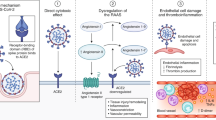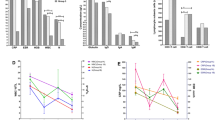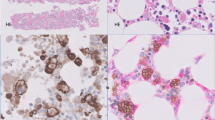Abstract
Nocardiosis has rarely been described after BMT. When the doses of immunosuppressive therapy were tapered, a 46-year-old BMT recipient developed chronic graft-versus-host disease (GVHD) and immunosuppressive drugs were increased. Sixteen days later the patient developed nocardiosis diagnosed by lung biopsy. Trimethoprim/sulfamethoxazole (TMP/SMZ) was initiated but the doses were reduced because of rising creatinine levels. Skin and cerebral dissemination of nocardiosis was observed and TMP/SMZ doses were increased. After 4 months, the brain lesion was unaltered despite resolution of pulmonary lesions. Clinical improvement was observed after drainage of the brain abscess.
This is a preview of subscription content, access via your institution
Access options
Subscribe to this journal
Receive 12 print issues and online access
$259.00 per year
only $21.58 per issue
Buy this article
- Purchase on Springer Link
- Instant access to full article PDF
Prices may be subject to local taxes which are calculated during checkout
Similar content being viewed by others
Author information
Authors and Affiliations
Rights and permissions
About this article
Cite this article
Machado, C., Macedo, M., Castelli, J. et al. Clinical features and successful recovery from disseminated nocardiosis after BMT. Bone Marrow Transplant 19, 81–82 (1997). https://doi.org/10.1038/sj.bmt.1700616
Received:
Accepted:
Issue Date:
DOI: https://doi.org/10.1038/sj.bmt.1700616
Keywords
This article is cited by
-
Pulmonary nocardiosis
Current Infectious Disease Reports (2001)



